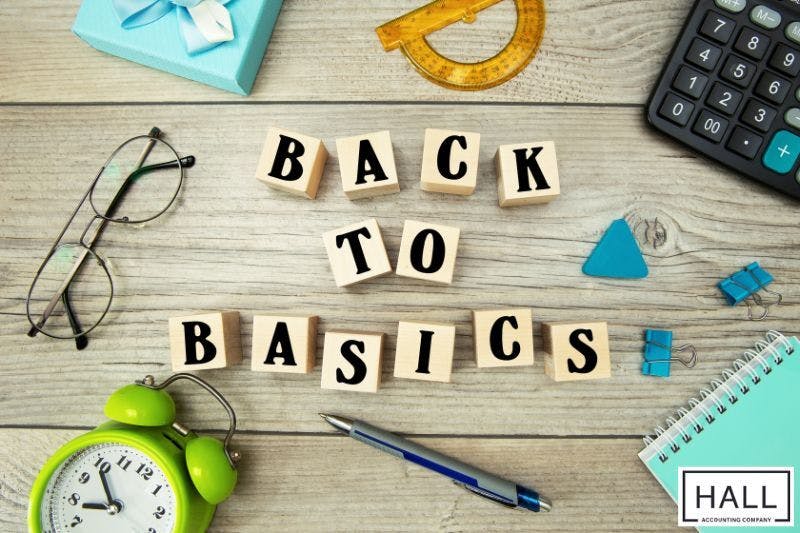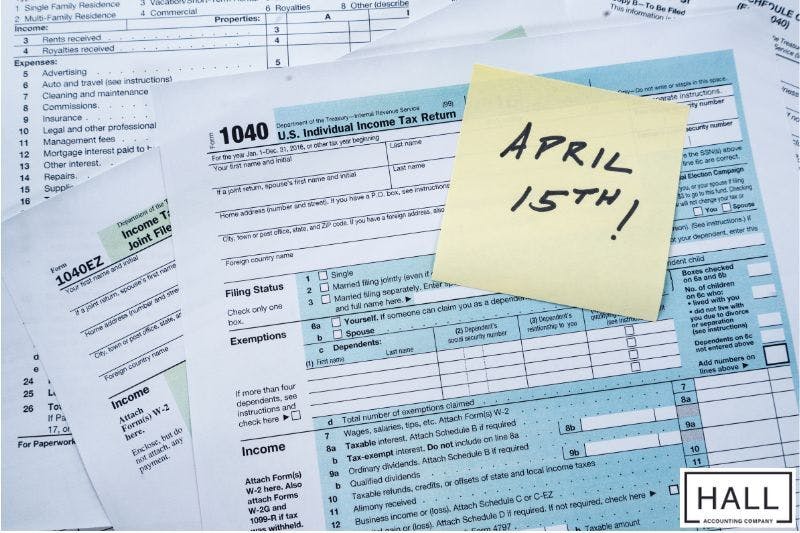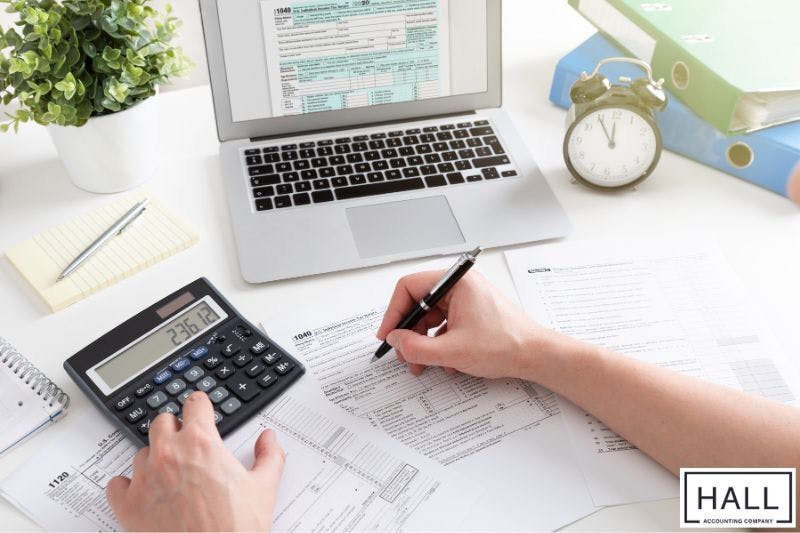
Self-employed vs. Freelance tax: Unsure how to submit your taxes correctly? Need advice? We help you master this topic and get your taxes done.
A question that often comes up during tax season is: As a freelancer, am I considered self-employed by the IRS? The differences between sole proprietors, independent contractors and freelancers is a blurred line when it comes to tax returns. The IRS considers all three to be self-employed if a certain amount of income is earned from providing goods or services to other businesses as a non-employee.
The most significant difference is the tax deductions that can be claimed as a freelancer compared to a self-employed worker. We’ll discuss these later.
In this article, we cover everything you need to know about self-employment tax laws, what documentation you need to submit your income tax, and the different forms the Internal Revenue Service requires of self-employed individuals.
Need help? Schedule your free call
The basics

Let’s look at some basic information you need to know regarding self employment taxes.
The IRS considers freelancers to be self-employed for tax purposes. Therefore, you need to file your taxes as a business owner. Welcome to being your own boss!
IRS assumes that you work multiple jobs to generate your income and have business expenses.
You will be required to submit all the relevant forms and keep documented evidence of your income and expenses.
Self-employed tax is 15.3% of taxable income for self-employed and freelance taxes. You will be allowed to claim tax deductions as a freelancer. Freelancers are allowed to claim certain tax deductions deemed appropriate for the kind of service they offer. A self employed individual has a wider range of business tax deductions due to the wider scope of business activities.
You will need to report all income sources as a self employed person.
You may need to make quarterly tax payments if your income exceeds a certain amount. With quarterly payments you pay estimated taxes and if you have overpaid, you will receive a tax refund.
Tax laws for self employed professionals and freelance workers
Self employment tax is a tax consisting of social security and medicare taxes primarily for individuals who work for themselves. You are required to calculate self employment tax (SE tax) yourself using Schedule SE (Form 1040 or 1040-S.
The SE tax rate is 15.3%. The rate consists of two parts: 12.4% for social security and 2.9% for medicare (hospital insurance).
If you’ve earned more than $400 in a tax year, you need to pay self-employed taxes. Your tax liability will be for the full amount of freelance income you’ve earned i.e from $1.
Freelancers who expect to earn $1,000 or more in a tax year will need to pay quarterly taxes.
Health Insurance
Under section 2042 of the Small Business Jobs Act, self-employed individuals are allowed to deduct the cost of health insurance for income tax purposes. This deduction is taken into account in calculating new earnings from self-employment.
Reporting and deposit of income taxes
You are personally responsible for reporting and depositing your self-employed or freelance taxes. The due dates depend on whether you file annually or quarterly. For up-to-date deadlines, you can access the IRS website.
Relevant business structures
These taxes also apply to the following business structures:
Limited liability company (LLC) - Single-member LLCs owned by individuals default to sole proprietorships. LLCs can elect to be treated as partnerships or C corps for income tax purposes if they meet the required stipulations.
It is advisable to consult a professional if you are unsure about the right entity type for your freelance or self employed business. Accounting firms like Hall Accounting Company offer tax services to individuals, including helping you prepare your taxes correctly for tax submission season. These services are especially helpful if you’re doing this for the first time and don’t know where to begin.
How to file self employed taxes

As we’ve previously mentioned, freelancers are treated as self employed individuals for tax purposes. The following categories of workers will file their taxes using the forms listed below.
Sole proprietor
Independent contractor
Startup founder (who works as an independent contractor)
Full-time freelancer
Part-time freelancer (where the income exceeds $400 per annum)
GIG workers (Anyone who works independently on an ad-hoc, temporary or irregular basis e.g., waiters, cleaners, gardeners, tellers, typists, event staff)
Self-employed people who sell goods online
Anyone who works on multiple projects and earns their money from more than one source
Step One: Keep accurate records
If you haven’t done this, you’ll have a difficult time accurately calculating your income and it will negatively affect the deductions you can claim that reduce your tax liability. Even if you’re here because tax season has already arrived, this step should be the first one you implement for your next submission.
There are a number of very good accounting software for small business owners and freelancers. We love to use QuickBooks Online and Xero for our SMEs because these software programs are powerful and make doing the taxes a breeze. If you’d like to find out more about our bookkeeping and tax services, give us a call today.
Step Two: Collect information and documentation

There are a number of IRS forms that you will need to submit for tax purposes. Here is a summary of those forms.
1099 NEC form/s
NEC stands for Non Employee Compensation. This form is sent to recipients by 31 January and has to be filed by 28 February (paper filers) and 31 March (e-filers). Each business that paid you more than $600 must send you this form.
Form 1099-K
This form is sent by businesses such as PayPal, Venmo, Shopify and eBay to name a few and provides the annual gross amount of payment transactions made via their platforms. For instance, if you sell your goods via Shopify, they receive the payment on your behalf, and they process the transaction.
1040 Schedule C form (Profit or Loss from Business)
This is the actual IRS submission form, where you record all your income and expenses. It consists of five parts and each part records different information. You should gather all this information before you begin your return to avoid delays or guesswork.
You should know which accounting method you use (accrual, cash basis or a combination), the amount of the cost of goods sold (goods business), the total business expenses and inventory on hand.
Let’s take a brief look at the information needed for each part.
Part I - Income
Part II - Qualified business expenses
Part III - Cost of goods sold (if applicable)
Part IV - Vehicle expenses
Part V - Other expenses
One thing we see all the time is that self employed workers do not take advantage of business tax deductions and it’s a shame because it can significantly reduce your taxable income, which means less tax!
If we’re frustrated knowing it happens, we can’t imagine how you feel about it. Stuff like this is unnecessary when you can easily get help. In fact, it won’t take more than a phone call. We can help you shift through all the bills, receipts and other documents you’ve stuffed in a file. Whether it’s office supplies, utilities, computer equipment, or travel, to name a few, if these expenses are necessary for your business, you can deduct them from your taxable income.
Step 3: Calculate your tax liability
You will do this using Form 1040 - Schedule SE. Basically it is the sum of all your income, minus your cost of goods sold, minus your business expenses, minus any other allowable deductions such as health insurance.
Step 4: Determine if you need to pay quarterly tax
Freelancers or self employed workers that expect to end on an income greater than $1,000 must make quarterly payments to the IRS. This is two-fold. It helps workers manage their tax liability by breaking it into smaller payments and the IRS receives staggered deposits which obviously help with the distribution of funds to the elderly, socially insecure, and disabled (social security).
Deposits are due as follows:
April 15th (for the first quarter of the year)
June 15th (for the second quarter of the year)
Sept 15th (for the third quarter of the year)
January 15th of the following year (for the 4th quarter of the previous year.)
Step 5: Report and make your deposit
When you have doubled-checked your information, you are ready to submit your filing. Before you press the submit button, check that you can prove every figure you have submitted, especially allowable deductions. If you can’t, the rule of thumb is: Don’t do it. You may get audited at some point and if you can’t come up with the documentation you can expect a fine. It’s not worth the stress.
And finally
We’ve come to the end of our article about self employed vs. freelance tax. We hope this short guide has given you some useful information. We know that there is much more that can be said about this topic, but we trust this is a great start. Let us know if you have more to discuss. The Hall Accounting team is ready to help you prepare your taxes and also help you plan for future taxes - the most important objective being to reduce your tax liability.